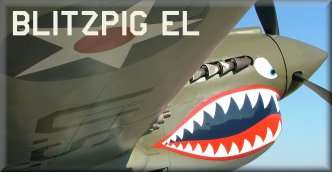
 |
|
#1521
|
|||
|
|||
|
As for favoring the better pilot, there are a lot of different kinds of better pilots. Some shoot better, some fly better and others prepare better. The first two kinds of pilot are already able to show their skill in IL2. What will change by including realistic systems modelling is that it will enable the third kind of pilots to do the same
I don't know if SoW will include all that. However, i have a feeling it will be able to include them in the future. We didn't have perfect mode, water=3 and radio navigation in IL2 either back in 2001, but we have the first two now and we're about to get the third one thanks to team daidalos (just to gently steer the discussion back on topic ) |
|
#1522
|
|||
|
|||
|
S!
I see what you mean, but if you compare today's piston engines to WW2 ones there is a difference So operating these engines differs quite a bit as the margins with the "war engines" are smaller and require more attention from the pilot, tedious maintenance to dish out the HP and be somewhat reliable. With the Lycomings and similar the flying and maintenance is VERY simple, requiring less. Done some on Lycomings So that is what SoW should bring, attention to what you do and how you manage the engine. SoW will bring more high fidelity and also wear & tear, if still in the features. You need to watch those gauges, in IL-2 they are more or less just showing something and you do not have to worry much. The design philosophy also plays a role in a sim, if modelled. If you compare Hurricane/Spitfire vs Bf109E cockpits, there are more levers and stuff to operate in the RAF birds than in Bf109E, which increases the workload for the pilot. Compare today's HOTAS jets against the older jets and you see the same difference. Less work for the pilot = more of his resources are committed to fighting. Oh well..the wait is nearing it's end soonish so we will see |
|
#1523
|
|||
|
|||
|
Quote:
Over the years, flying has become safer. There are more instruments on a modern aircraft, but they allow you to do things that were impossible in earlier eras (such as 0/0 landings). You may have to learn more instruments, but in the end, it becomes easier to accomplish the same tasks in a modern aircraft. Compare navigating with a hand-cranked hoop ADF vs. GPS. |
|
#1524
|
|||
|
|||
|
very good update and good news for all, i hope for thanksgiving or holidays release, thanks oleg
|
|
#1525
|
|||
|
|||
|
Quote:
|
|
#1526
|
|||
|
|||
|
Quote:
Land long? No problem, just reverse the thrust and you will be going backwards in seconds. Rocks on that cloud you just flew into? No problem, just throw on some more throttle and climb over those rocks like a helicopter. I'm being silly of course because in real life I would rather have a turboprop in most bad situations. That's assuming I could afford the fuel costs. Splitter |
|
#1527
|
||||
|
||||
|
The turboprop would be less expensive to operate than a Merlin, P&W, Allison, DB, etc...
__________________
 Personally speaking, the P-40 could contend on an equal footing with all the types of Messerschmitts, almost to the end of 1943. ~Nikolay Gerasimovitch Golodnikov |
|
#1528
|
||||
|
||||
|
... but have no charm at all. Turbojets, turboprops and turbofans are like flying vacuumcleaners to me. Pulsejets, ramjets and scramjets are even worse.
|
|
#1529
|
||||
|
||||
|
I agree with you totally, but none the less there is a reason why modern piston engined aircraft are now relegated to the bottom of the pecking order.
__________________
 Personally speaking, the P-40 could contend on an equal footing with all the types of Messerschmitts, almost to the end of 1943. ~Nikolay Gerasimovitch Golodnikov |
|
#1530
|
|||
|
|||
|
Quote:
This short youtube clip explains it all (embedding disabled, go to link) .... Quote:
Last edited by WTE_Galway; 09-27-2010 at 12:46 AM. |
 |
|
|